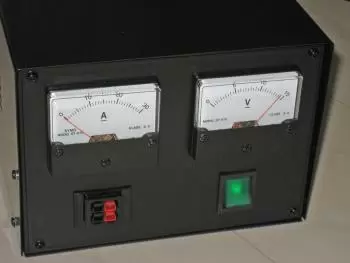
Solar panel peak power is the maximum electrical power that a solar panel system is capable of generating under the following standard conditions:
-
Temperature: 20 degrees Celsius.
-
Received irradiance: 1000 W/m²
-
Air mass: 1.5
Air mass measures the distance that radiation travels as it passes through the atmosphere and varies according to the angle of incidence.
Irradiance is the power per unit area of electromagnetic radiation incident from solar energy on a solar cell surface.
Autonomous solar systems use batteries which also use the peak power concept. Battery peak power is the maximum power that the power supply can support for a short period in standard test conditions. Peak power differs from continuous power, which refers to the amount of power the source can continuously deliver.
The maximum power is always higher than the nominal power (or power rating) and is only required for a limited time. The nominal power is the maximum operating power at which a solar panel has been designed, although, at specific times, this power can be exceeded.
Why is peak power significant?
Knowing the maximum power a solar panel produces helps ensure that the power supply can handle peak loads. In this way, solar panel peak power helps prevent the photovoltaic panels from damaging.
For example, a 600 watt supply may have a peak power of approximately 1200 watts for 5 seconds. Maximum wattage differs from source to source and is usually specified on the power supply's datasheets.
A high voltage power supply will be able to provide enough power to drive all parts and accomplish the functions of the load. However, a power supply that is precisely 100% of charging capacity might not be enough due to losses and other factors affecting charging efficiency.
What is a watt-peak (Wp)?
A watt-peak (Wp) is the maximum electrical energy that a photovoltaic panel can supply under standard test conditions.
The notion of watt-peak is used to compare the performance of PV solar systems and to forecast the amount of electricity they can produce.
How helpful is the watt-peak (Wp)?
Peak Watts allows for a comparison between the power outputs that PV panels from different manufacturers generate. The higher the watt-peak (Wp) for the same surface area, the more efficient the panel is.
The watt-peak is also used to calculate the size of a PV facility according to the desired amount of energy obtained, taking into account sunlight conditions.
A different output is achieved for one kWp of solar panels depending on the PV system's region and its sunlight conditions.
Therefore, on the roof of a house in Brussels, a one kWp installation will produce 900 kilowatt-hours (kWh) per year. It is calculated under optimal conditions: south orientation, 35° angle. The same facility in a house in southern Europe will produce 1250 kWh/year.